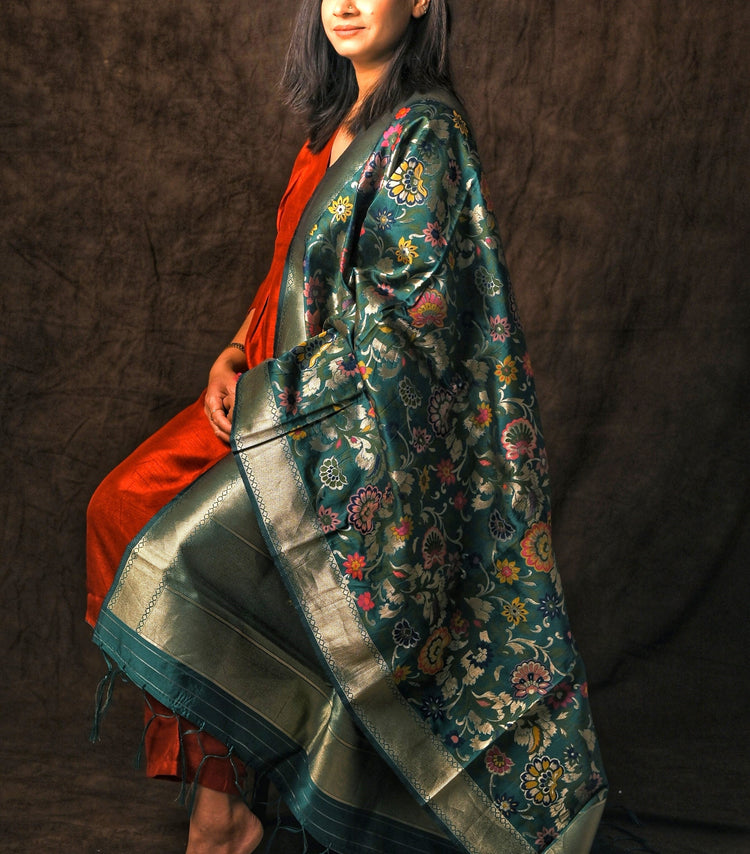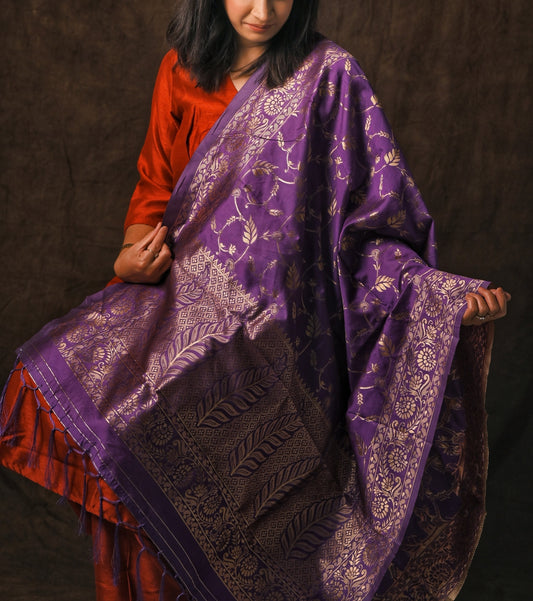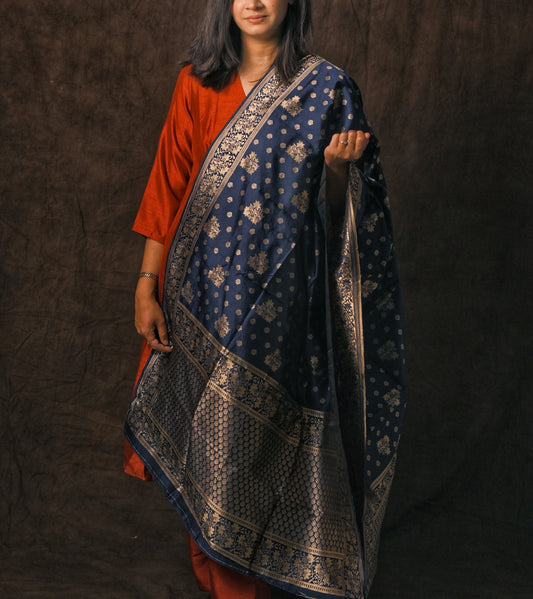-
Women Banarasi Silk Dupatta
Regular price $35.00 USDRegular priceUnit price per$42.00 USDSale price $35.00 USDSale
Discover more of our favorites
Example product title
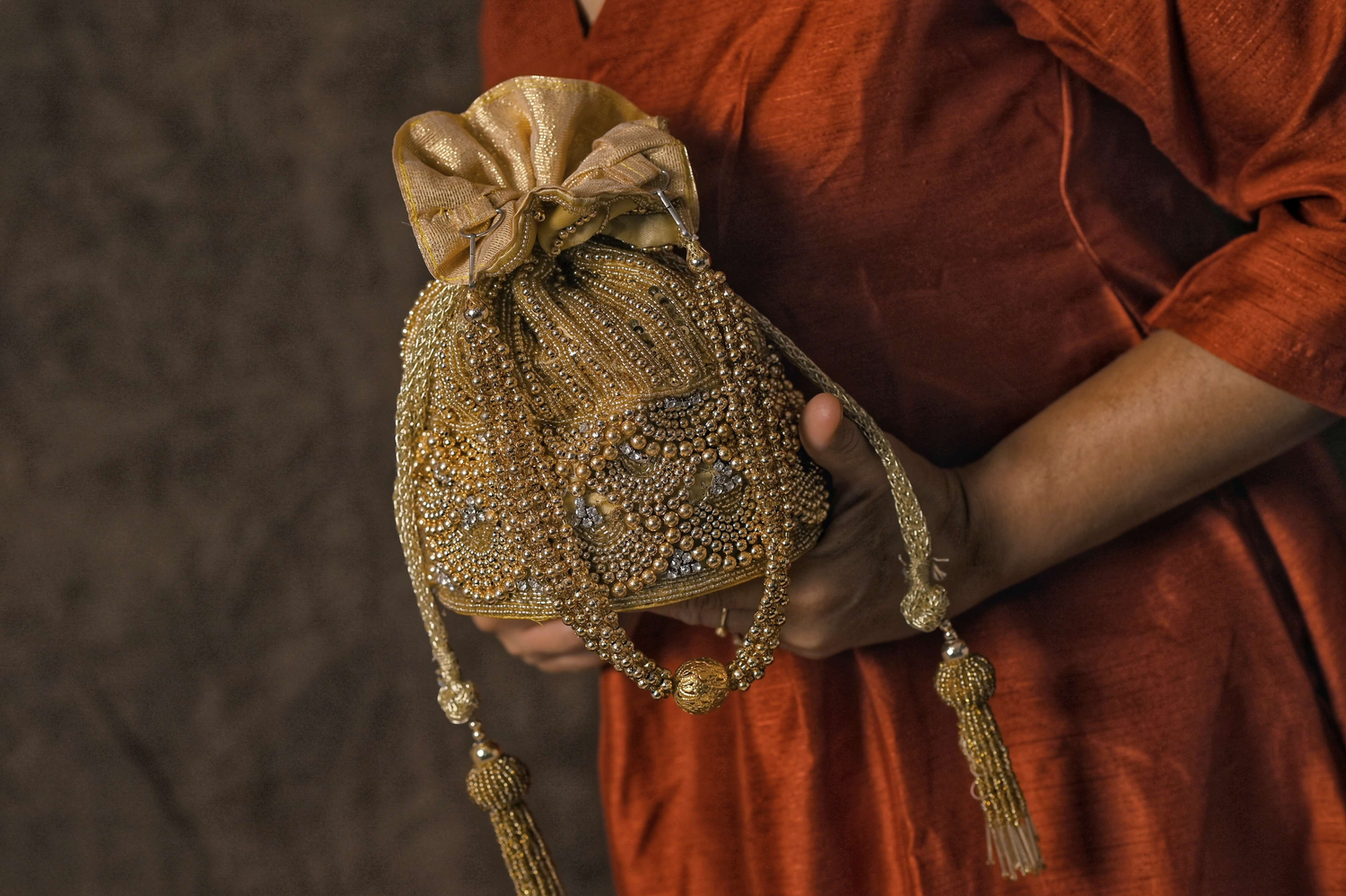
Potli Bags
Potli bags (Drawstring Bag/ Bundle Bag) are irreplaceable fashion accessories that women...
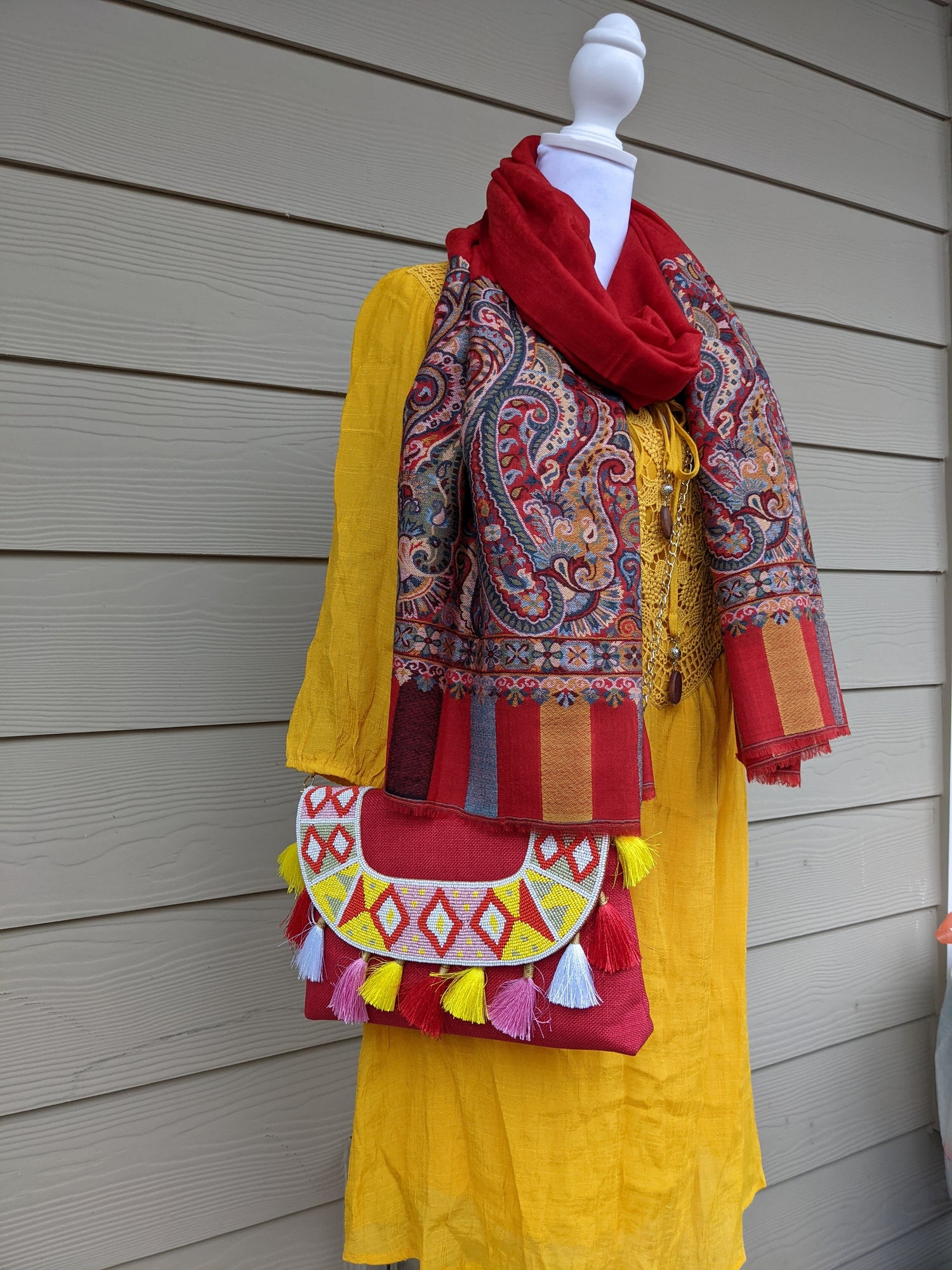
We got you covered for every occasion and all seasons!
At Craft Bazaar our goal is to provide unique and good quality accessories from different parts of India. And to support the local craftsmen who are working very hard to preserve those artforms.
Banarasi Dupatta
A Tapestry of Tradition: The Enchanting World of Banarasi Dupattas
The Banarasi dupatta is more than just an accessory; it's a woven story whispered down through generations, a vibrant tapestry reflecting the rich cultural heritage of India. Each shimmering thread, meticulously chosen and expertly interlaced, speaks of artistry, devotion, and the enduring beauty of textiles.
Rooted in Royalty:
The Banarasi dupatta's origins trace back to the ancient city of Varanasi, formerly known as Banaras. Legends claim its story began centuries ago, with patronage from Mughal emperors who were captivated by the intricate work and luxurious fabrics. These early dupattas were crafted with real gold and silver threads, reserved for royalty and nobility. Imagine the opulence – a queen adorned in a shimmering silk saree, its elegance accentuated by a Banarasi dupatta woven with threads of precious metals.
A Legacy of Exquisite Craftsmanship:
The creation of a Banarasi dupatta is a labor of love. Skilled artisans, known as "karigars," employ time-honored techniques passed down through families for generations. The process begins with the selection of the finest threads – pure silk (Katan silk being a favorite), delicate cotton, or even shimmering metallic threads. These threads are then meticulously dyed in a kaleidoscope of colors, each shade a secret recipe passed down through generations. The weaving itself is a mesmerizing dance of fingers and loom. Each motif, each intricate design, is painstakingly brought to life, transforming individual threads into a breathtaking work of art.
A Symphony of Colors and Designs:
The beauty of the Banarasi dupatta lies in its breathtaking visual symphony. The color palette is as diverse as India itself – vibrant reds symbolizing passion, serene blues reflecting the vast sky, and regal golds reminiscent of a bygone era. The designs are equally captivating, a captivating blend of floral motifs, geometric patterns, and even depictions of mythological creatures.
Beyond Adornment: A Cultural Expression
Banarasi dupattas are more than just beautiful adornments; they are cultural expressions deeply woven into the fabric of Indian society. They play a significant role in traditional weddings, where brides are often adorned in exquisite Banarasi sarees complemented by matching dupattas. They are worn during religious ceremonies, adding a touch of reverence and elegance. They are even gifted as cherished heirlooms, passed down through generations, each thread carrying a story and a legacy.
A Modern Renaissance:
While the Banarasi dupatta's history is steeped in tradition, it continues to evolve in the modern world. Designers are reinterpreting classic motifs, incorporating contemporary aesthetics while remaining true to the essence of the craft. Today, you can find Banarasi dupattas in a wider range of fabrics, catering to different tastes and budgets. Whether a bride seeking a timeless piece for her wedding day or a fashion-conscious woman wanting to add a touch of cultural heritage to her everyday attire, there's a Banarasi dupatta waiting to be discovered.
Beyond Practicality: A Statement Piece
The beauty of the Banarasi dupatta lies not just in its aesthetics but also in its power to transform an outfit. A simple white kurta can be elevated to a statement piece with the addition of a vibrantly colored Banarasi dupatta. It adds a touch of sophistication to a casual outfit and a dose of cultural flair to a modern ensemble.
Owning a Piece of History:
When you own a Banarasi dupatta, you're not just acquiring a piece of fabric; you're embracing a rich cultural heritage. You're supporting the livelihood of skilled artisans who keep this ancient craft alive. And most importantly, you're owning a piece of timeless beauty, a wearable work of art that will turn heads wherever you go.
So, the next time you seek an accessory that transcends mere fashion, consider the enchanting world of Banarasi dupattas. Explore the vibrant colors, the intricate designs, and the stories woven into every thread. Discover a piece that reflects your personal style while connecting you to a legacy as rich and vibrant as the dupatta itself.
Frequently Asked Questions (FAQ) - Banarasi Dupatta
1. What is a Banarasi dupatta?
A. A Banarasi dupatta is a long scarf or shawl originating from Varanasi, India. It's known for its exquisite craftsmanship, intricate designs, and luxurious fabrics, often made from pure silk or cotton.
2. What are the different types of Banarasi dupattas?
A. There are various types of Banarasi dupattas classified by weaving style, motifs, and materials. Some popular varieties include:
Jamdani: Features intricate geometric patterns woven directly on the loom.
Tanchoi: Known for its use of gold and silver threads (real or metallic) in floral or paisley motifs.
3. How can you tell if a Banarasi dupatta is real?
A. Material: Real Banarasi dupattas are typically made of high-quality silk or cotton. Look for a soft, luxurious feel and a characteristic sheen.
Weaving: Look for intricate designs woven directly into the fabric, not printed on.
4. How much does a Banarasi dupatta cost?
A. The price of a Banarasi dupatta varies depending on the size, material, craftsmanship, and intricacy of the design. Simpler dupattas can cost a few hundred dollars, while heirloom-quality pieces with real gold threads can reach thousands.
5.How to care for a Banarasi dupatta?
A. Dry cleaning is recommended for most Banarasi dupattas, especially those made of delicate silk.
Store them in a cool, dry place away from direct sunlight.
Avoid using harsh chemicals or perfumes on the fabric.
6. How to wear a Banarasi dupatta?
A. There are many ways to drape a Banarasi dupatta. A simple style involves folding it in half lengthwise and draping it over one shoulder, with the other end flowing down the back. You can also experiment with different pleating techniques or use the dupatta to create a veil effect.
7. Are Banarasi dupattas only for formal occasions?
A. While traditionally worn for weddings and special events, Banarasi dupattas can also be incorporated into modern outfits. A lighter weight dupatta can add a touch of elegance to a casual kurta or dress.
8. Can men wear Banarasi dupattas?
A. Traditionally, Banarasi dupattas are worn by women. However, some men might incorporate them into cultural events or artistic expressions.
9. Where can I buy a Banarasi dupatta?
A. You can find Banarasi dupattas in India at shops specializing in traditional textiles. Online retailers also offer a selection, but be sure to choose reputable sellers with authenticity guarantees.
10.Are there ethical considerations when buying a Banarasi dupatta?
A. Look for dupattas made by artisans using traditional techniques and fair labor practices. Supporting ethical producers helps ensure the survival of this ancient craft.
TAGS
banarasi dupatta, paithani dupatta, silk dupatta, dupatta in silk, patola dupatta, ajrakh dupatta, gaji silk dupatta, banarasi silk dupatta, gharchola dupatta, gajji silk dupatta.
